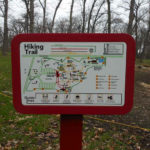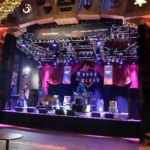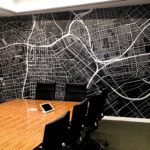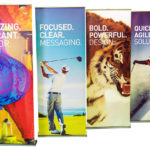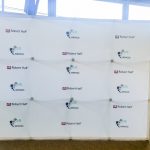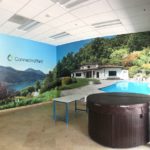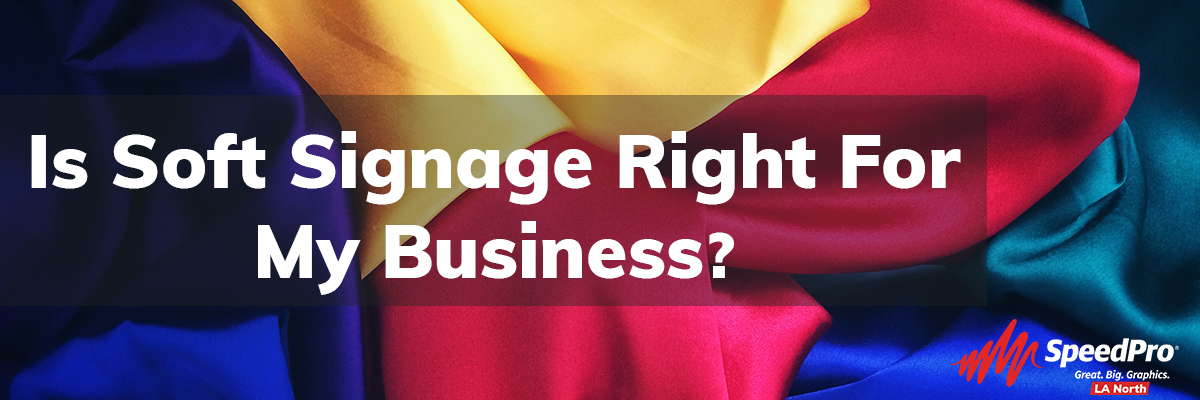
Is Soft Signage Right For My Business?
DECEMBER 18, 2020| SpeedPro LA NorthCategories
UncategorizedWhat Is Soft Signage?
If you are in the market for some new signage, you may feel overwhelmed by the sheer amount of options available to your business. Some of the most popular options for signage include vinyl and acrylic, but have you ever considered something softer? Soft signage is becoming popular due to its easy installation and lower cost compared to heavier signage. If soft signage is not something you are familiar with, we will walk you through all of its different applications and benefits.
Soft signage has long been used for hanging banners and trade show signage, and it is no wonder why. Soft signage uses lightweight fabric with your custom graphics printed on them instead of heavier materials such as acrylic and vinyl. They are much easier to fold up and store for future use, which in turn also makes them a cost-effective option to ship. Printing your custom graphics onto fabric is also a fairly simple process. It can be done one of two ways: Printing directly on the fabric, or using a heat transfer system called Dye Sublimation.
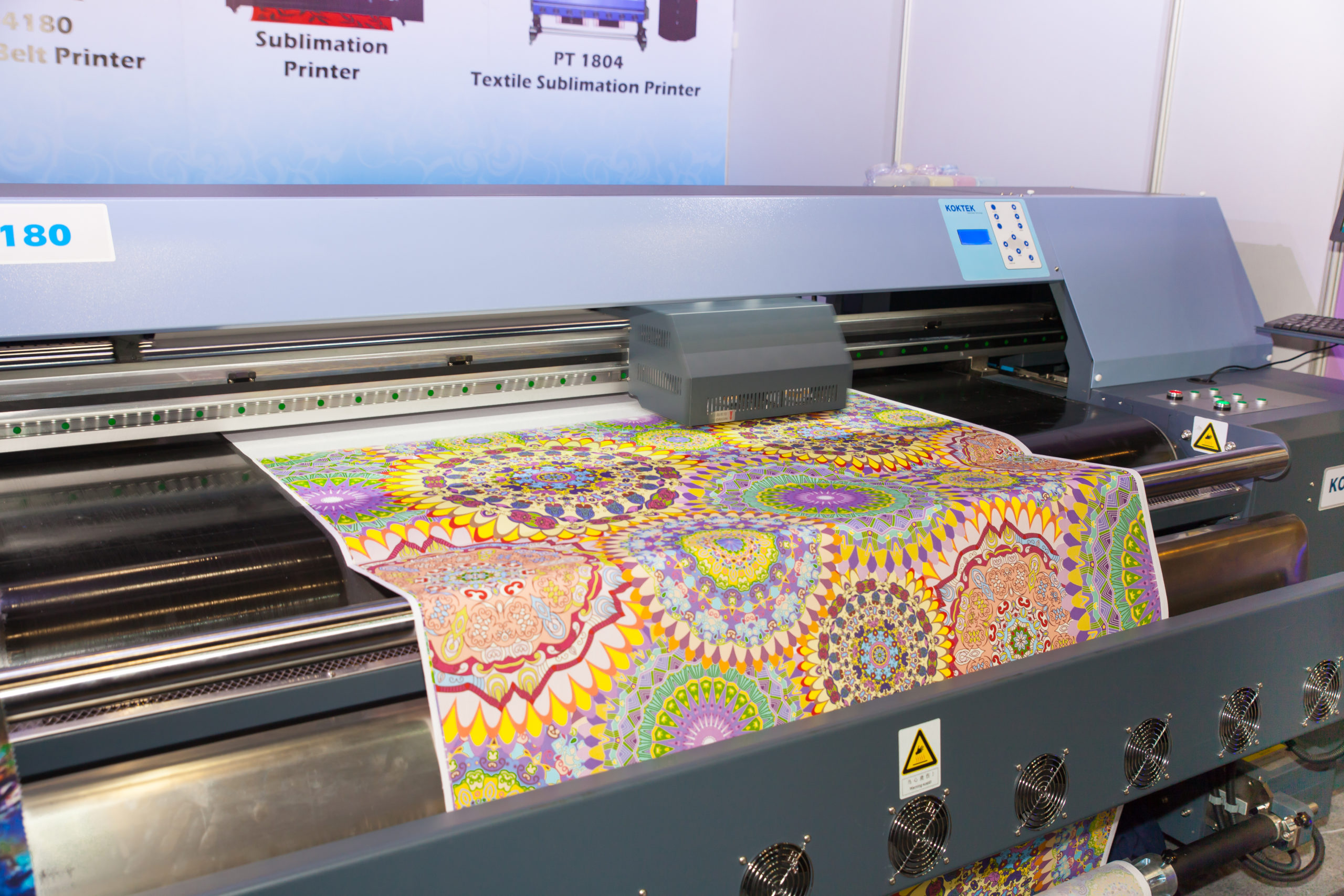 Printing Directly to Fabric
Printing Directly to Fabric
During this process, the fabric is run through a large printer and the ink is deposited directly onto the fabric. Of the two processes, this is the simplest and quickest. The printers work much like your at-home inkjet printer in that the print head moves back and forth on the fabric’s surface, laying down the ink. This printing process allows for larger projects such as backdrops in which you would not want a seam to be visible. While the process is simple, some printers have noted that since the ink is deposited directly to the fabric rather than a transfer sheet first, there is little to no room for error. If a mistake is noticed after printing, the current fabric will have been wasted and a new one will have to be made. Another drawback of direct printing, is that the images could be slightly blurry and the colors not as vivid as you would like. If some of these drawbacks are important to you when it comes to printing, consider the second option: Dye Sublimation.
Dye Sublimation
Dye Sublimation is a printing process in which we first print our graphics on a paper sheet, then use heat transfer to deposit the ink into the fibers of our fabric. This is the same process that is used by smaller-format printers who produce custom t-shirts, mugs, and other items. This type of printing can only be done with fabric 10ft wide, otherwise multiple fabric pieces would have to be sewn together, resulting in seams. Unlike printing directly to fabric, if an error is noticed on the transfer paper, it can be corrected before being transferred over to the fabric. While the ink for this type of printing can be more expensive than the ink for direct to fabric printing, the images will appear much sharper and the colors more vivid. As you have read, each process of fabric printing has its pros and cons, and the type of printing that will be used on your project entirely depends on what type of application it will have. One process may not be ideal for one type of project, but perfect for another. This brings us to the various uses for soft signage.

Soft Signage Uses
Soft signage is a versatile type of signage that can be used in just about any place you would normally other type of signage. Some of the common applications for soft signage include custom tents, tablecloths, and hanging banners. These types of products have long dominated the trade show industry, but are now becoming staples in other industry verticals. Fabric banners give their surroundings a high-end feel, and can be placed in a light-box to create backlit graphics, making them perfect for retail spaces. Silicone-edge graphics or SEG for short, are becoming a popular option when it comes to soft signage banners. These signs use a fabric with its edges dipped in silicone and then easily installed into a metal frame for a clean look. Not sure how to incorporate soft signage into your business? Here are some ideas on where soft signage can live.
-Experiential Marketing: Experiential Marketing focuses on creating interactive experiences for consumers to better understand the company’s brand or product. These experiences aim to fully immerse the consumer in what the brand is or what their new product can do. These are great opportunities for soft signage due to its high end look, easy installation, and portability.
-Real Estate: Most real estate “For Sale” signs tend to look the same, but implementing soft signage into your sales efforts could help you stand out. Some great options for real estate include outdoor flags, also known as “teardrop” or “feather”, depending on the shape of your flag. These flags are easy to spot and can include your custom graphics either on one side, or both sides of the flag.
-Restaurants: With people always rushing around to get things done, making dinner seems like an Olympian-sized task, which has caused an increase in take-out and delivery services from restaurants. Using soft signage is a great way to make sure that your customers can easily order and pick up their meals. Banners and flags provide a great way to grab walk-ins, while tents and tablecloths can create a branded pick-up station for customers and delivery drivers alike!
-Events: Whether you’re hosting a gala, a film premiere, or a local fundraiser, soft signage is perfect for any event! A combination of hanging banners, metal truss signage, tablecloths, and even fabric step-and-repeats can create the ultimate VIP feel for your event.
-Interior Design: Large-format soft signage isn’t only for promotions and sales, it can become a unique addition to a space’s interior design. A multitude of colors and patterns can be printed onto the fabric and strategically placed in any setting to complement the current design and layout of the room. A beautiful oceanic scene on a hanging fabric can enhance the design of an aquarium.
How SpeedPro Can Help
Now that we have covered some of the important topics regarding Soft Signage such as what it is, how it’s made, and what its uses are, you may have a good idea of what Soft Signage can do to increase sales or traffic for your business. SpeedPro LA North can handle all of your Soft Signage needs and if you still have questions, contact us! We can help you create the perfect soft signage for your business and give you some tips on the best way to display your signs.



